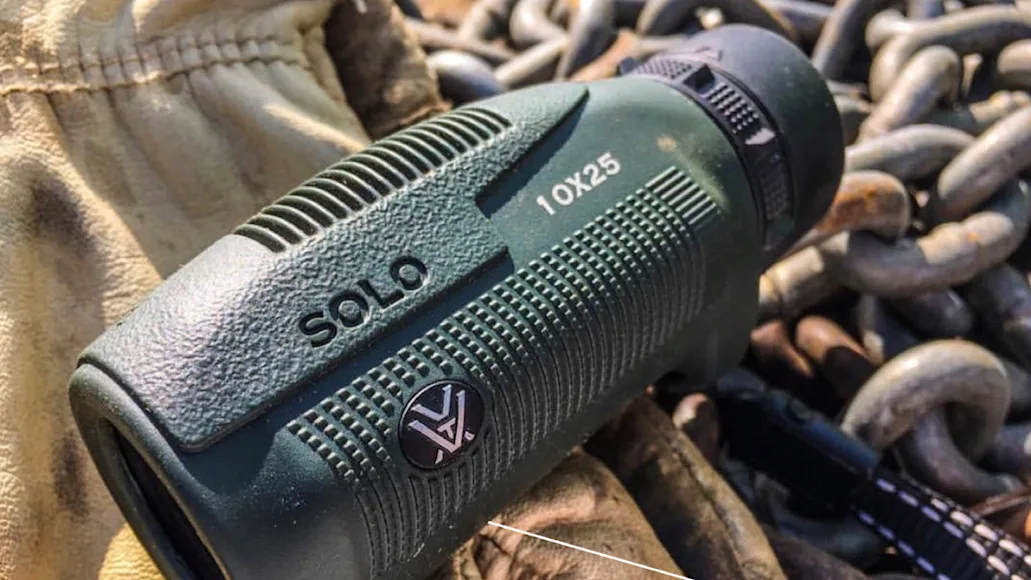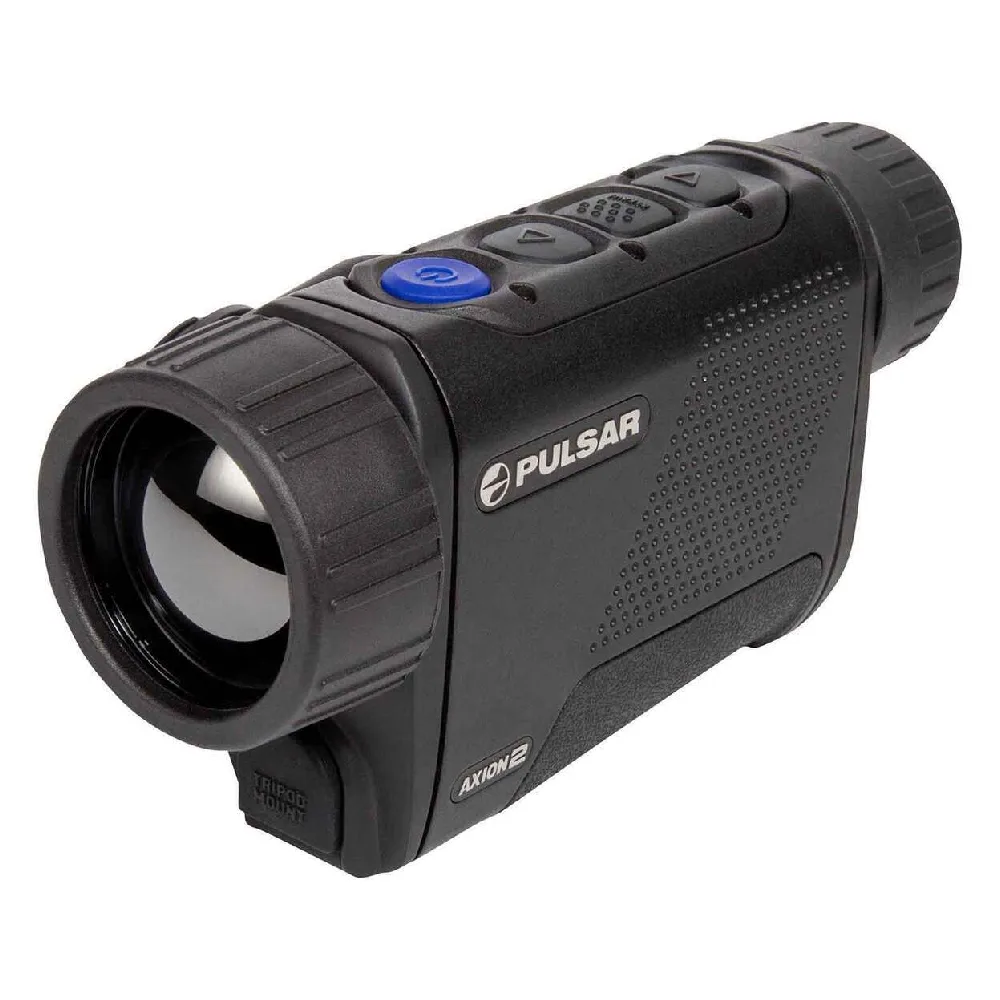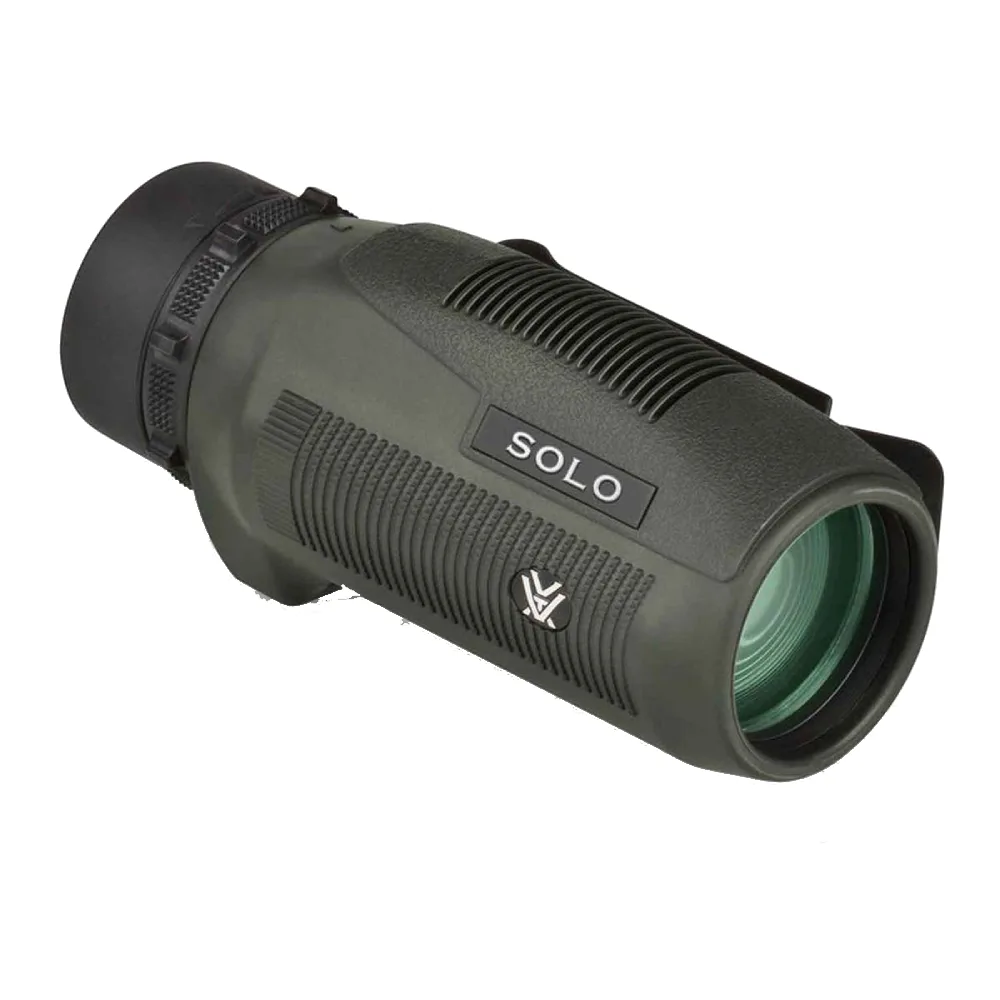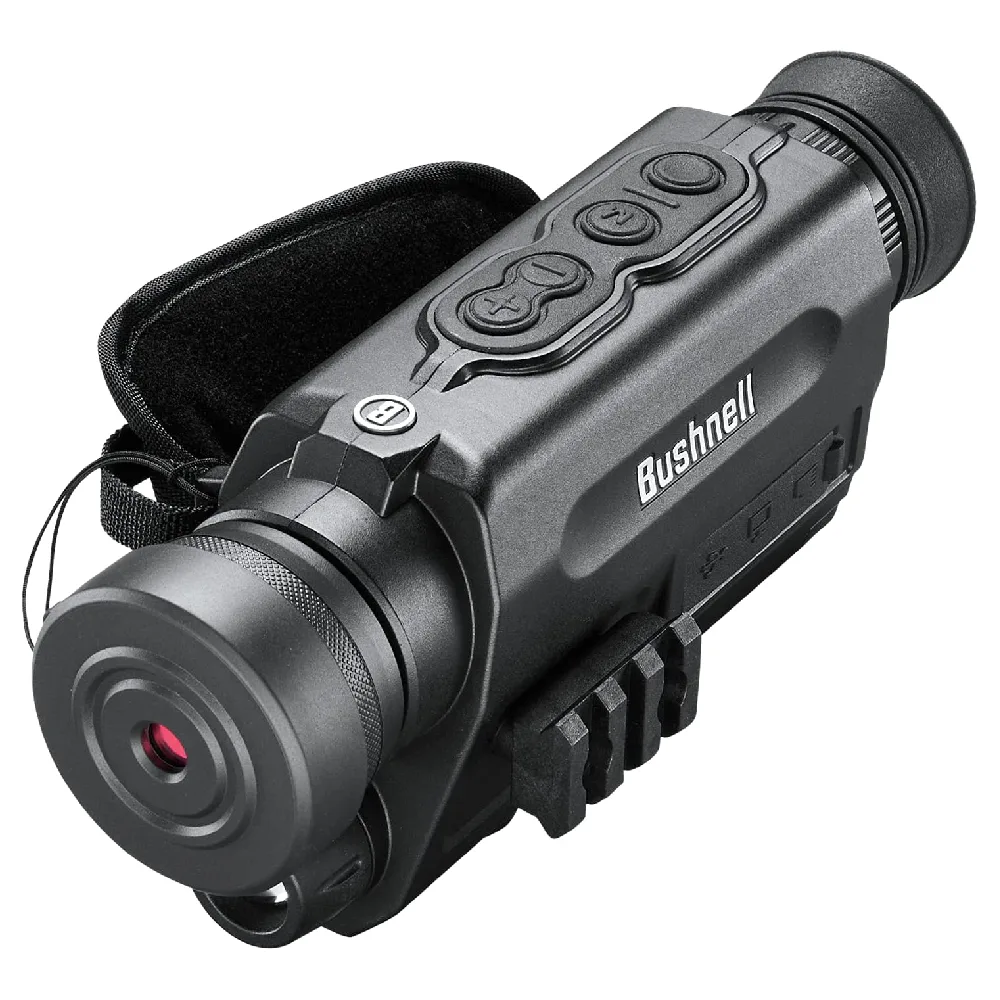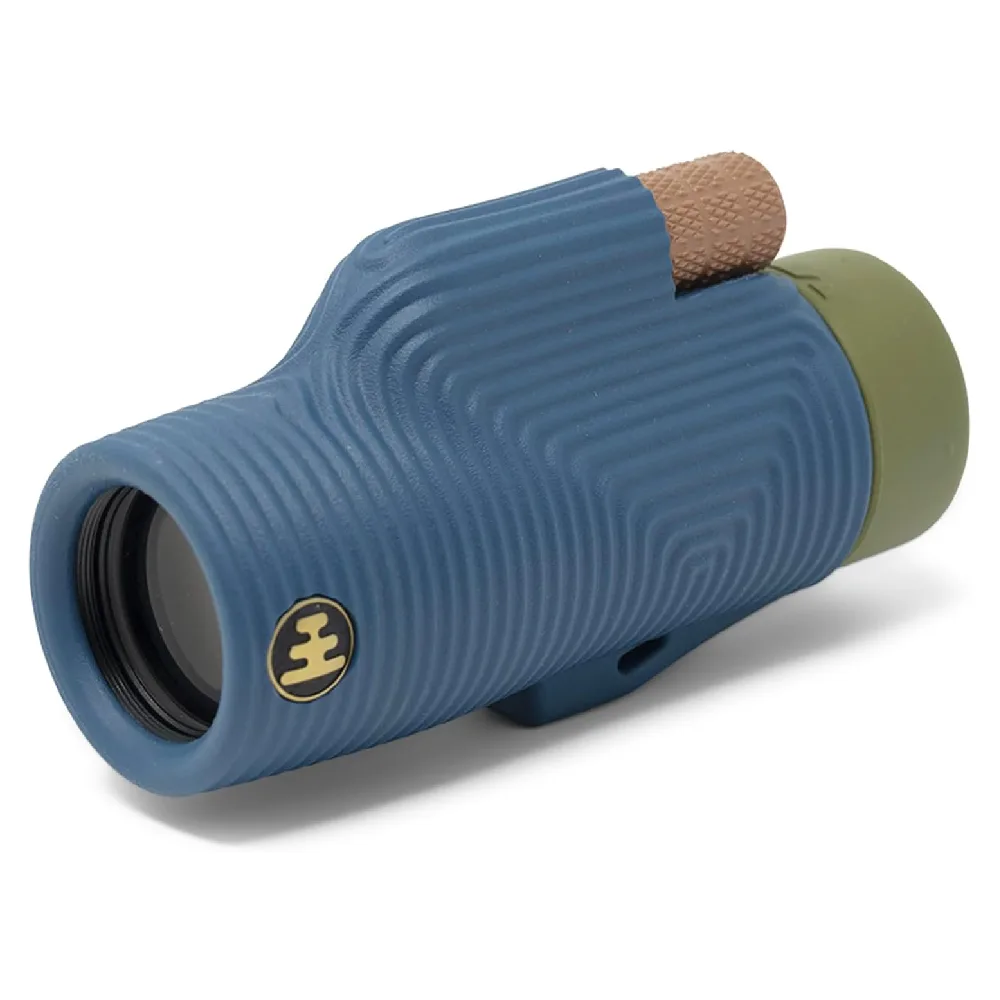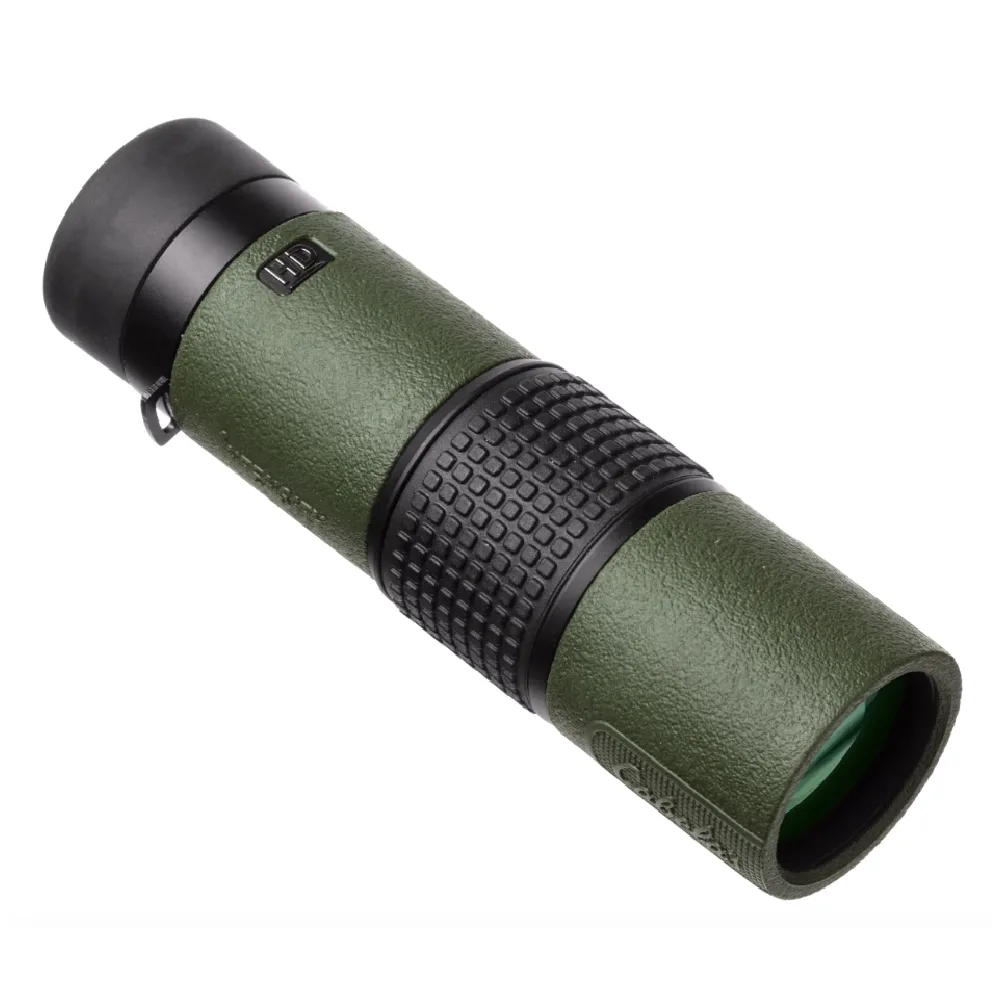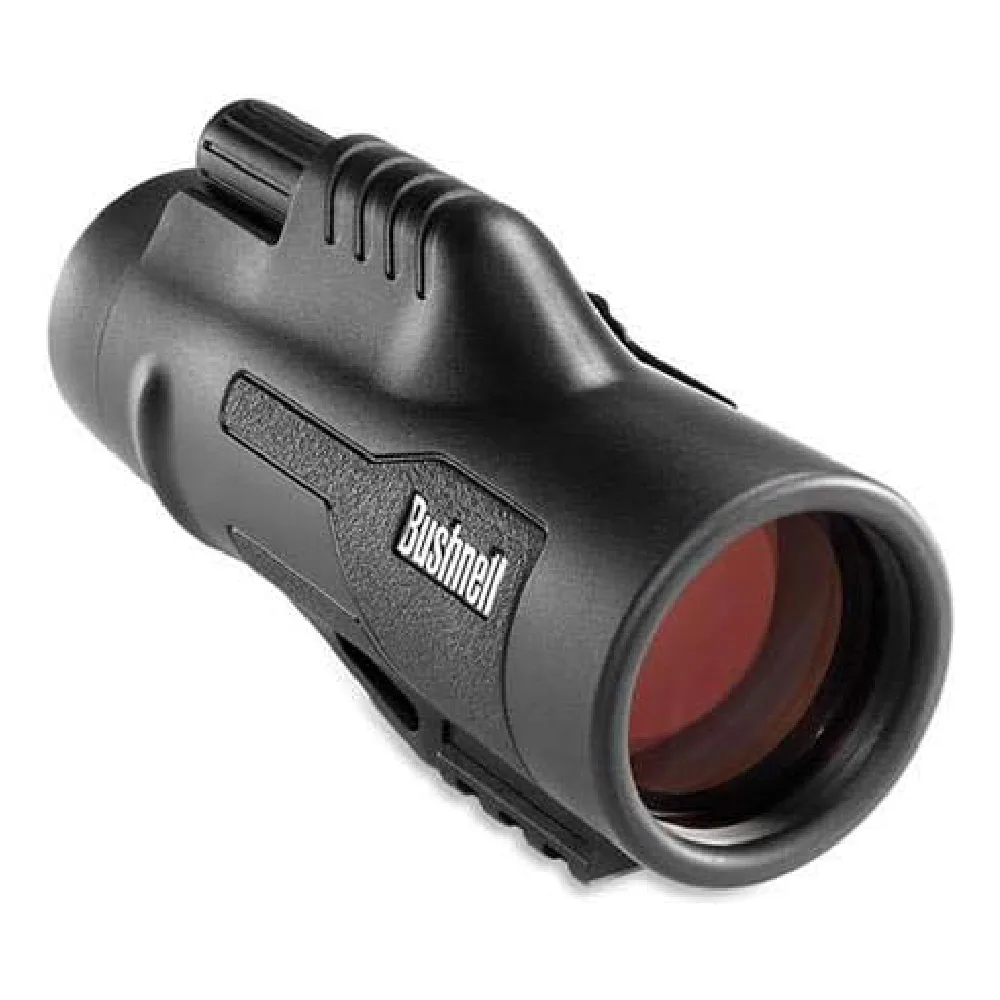We may earn revenue from the products available on this page and participate in affiliate programs. Learn more ›
This past turkey season, I decided to bring along my monocular for the first time, as the compact design fit perfectly in the box call pocket of my turkey vest. To my surprise, it became our most used item of the hunt. I doubt we would have been as successful as we were, hunting turkey across a 3,000-acre ranch in western Oklahoma, without it. The right monocular can be your trusted companion, unveiling the beauty and wildlife of the natural world—and allowing you to stalk prey—with impeccable clarity and precision.
Whether you’re an avid birdwatcher, an outdoor enthusiast, a hunter (like me) or a tactical professional in need of a reliable optic, choosing the best monocular is paramount. In this review, we researched and tested monoculars from some of the biggest brands like Vortex, Bushnell, and Pulsar. From compact designs to high-powered thermal and night vision optics, we found the best monoculars to elevate your viewing experience and bring the world closer than ever before.
Best Overall: Vortex Recon R/T
Best Thermal: Pulsar Axion 2 Thermal
Best Night Vision: Bushnell Equinox X650
Best for Hunting: Vortex Solo
Best for Bird Watching: Nocs Provision Zoom Tube
Best Budget: Cabela’s Intensity
Most Versatile: Bushnell Legend
Best Overall: Vortex Recon R/T
Specs
Magnification: 15x
Objective Lens Diameter: 50mm
Field of View: 215ft/1000 yards
Eye Relief: 16mm
Weight: 15.2 ounces
Pros
Ranging reticle
Comes with unlimited, unconditional lifetime warranty
Fog-proof and waterproof
Convenient mounting option for tripod
Cons
More expensive than others on our list

Right out of the box, I was super impressed with the quality of this optic. The Vortex Recon R/T 15x50 is a premium tactical designed monocular built for rigorous use and designed to be used as a compact spotting scope. You can carry it on a lanyard, clipped to a belt/pant/MOLLE, or mounted on a tripod. While testing it in the field, I was seriously impressed with the clarity of the glass. The extra-low dispersion glass and XR anti-reflective coatings deliver incredible light transmission, making it a solid performer in low-light conditions. My active-duty military husband was a big fan of the ranging reticle, definitely a feature that makes this stand out for tactical applications and in hunting shot ranging. The reticle allows you to calculate distances using milliradian (mrad) measurement.
I like monoculars for turkey hunting but this would be great for big game hunting as well. It’s lightweight at just 15.2 ounces, but still rugged, with a fog-proof and waterproof design that can handle any environment. The large focus wheel and reticle focus adjustments make dialing in your image smooth and precise. The flared eyecup does a great job of blocking out stray light, and it folds down easily for eyeglass wearers.

Versatility is another big plus; this is more than your average monocular. It essentially combines the power of binoculars and a spotting scope into one. Given its size, it proved quick access for viewing. At first, I thought the hand strap was a bit gimmicky, but after using it I did come to like and use it. The only downside is its premium price tag for a monocular, but for the performance (and the lifetime warranty), you’re investing in a top-tier optic that won’t let you down.
Best Thermal: Pulsar Axion 2 Thermal
Specs
Thermal Sensor: 320×240 pixels
Magnification: 4.5-18x (with digital zoom)
Objective Lens Diameter: 30mm
Weight: 9.9 ounces
Pros
User-friendly controls make for seamless operation
IPX7-rated for water resistance
Built-in photo and video recorder
Long detection range of 1,750 yards
Cons
Higher price point compared to traditional non-thermal monoculars
Pulsar is well-known for its quality thermal optics (including thermal scopes and thermal binoculars) and the Pulsar Axion 2 Thermal Monocular lives up to that reputation. Equipped with a state-of-the-art 320×240-pixel thermal sensor, it unlocks the nocturnal world of hidden heat signatures with exceptional clarity. Its versatile magnification range coupled with digital zoom capabilities allow you to explore every detail of the landscape.
You can even capture footage with the built-in photo and video recorder and connect to the Pulsar app via Wi-Fi so you can live stream or remote control the monocular from anywhere. With an impressive detection range of up to 1750 yards, it’s an excellent tool for hunters, wildlife enthusiasts, and security professionals.

We like the compact and lightweight design that makes this thermal monocular easy to handle even during extended observation sessions. The water-resistant construction gives you the confidence to use it in various weather conditions without worry. While its price point is significantly higher than traditional monoculars, the Pulsar Axion 2’s exceptional thermal imaging capabilities and user-friendly interface make it a top-tier choice for those seeking the best in thermal technology.
Best Night Vision: Bushnell Equinox X650
Specs
Magnification: 5x(optical), 9x(digital)
Objective Lens Diameter: 32mm
Field of View: 23.2 feet / 17.4 yards
Eye Relief: 22 mm
Weight: 11.6 ounces
Pros
Advanced digital night vision technology for clear and bright images
Powerful 9x digital magnification
Built-in adjustable infrared illuminator enhances visibility in total darkness.
Cons
Relatively heavier than some other monoculars tested
The Bushnell Equinox X650 Night Vision Monocular is a solid choice if you’re looking for seeking night vision capabilities without breaking the bank. Its digital night vision technology delivers clear and bright images in low-light and dark environments, making it suitable for various applications, from wildlife observation to surveillance. The built-in adjustable infrared illuminator extends its usability into total darkness—a handy feature for nighttime hunts and explorations.
It has an IPX4 water-resistant rating so you can use it rain or shine. However, the added battery weight makes it a bit heavier than more compact monoculars we tested. Keep in mind, too, that the effective range and battery life can vary based on usage and conditions. Such is the case for all night vision monoculars and optics, of course (including our favorite night vision binoculars).
Best for Hunting: Vortex Solo
Specs
Magnification: 10x
Objective Lens Diameter: 25mm
Field of View: 315 feet/1000 yards
Eye Relief: 16mm
Weight: 5.6 ounces
Pros
Exceptional optical clarity and brightness
Compact non-slip grip, and durable external protection
Impressive field of view with adjustable eyecup
Cons
Smaller objective lens
The Vortex Solo Monocular delivers the exceptional quality you expect from Vortex. We found it consistently provides outstanding optical clarity, making distant objects appear bright and sharp. The impressive 10x magnification proved ideal for various outdoor activities, from birdwatching to hiking, allowing us to observe wildlife and landscapes up close.
The monocular’s compact and lightweight design makes it very portable—you can easily tuck it in your hunting backpack or even your pocket. It feels very rugged and durable, like it could take a beating out in the field. Plus, the waterproofing and fogproofing give me confidence it can perform well in various conditions, like rain or sleet. That’s huge when I’m hunting in areas with unpredictable weather.
However, it’s worth noting that its smaller objective lens may not excel in low-light scenarios compared to the Vortex Diamondback binoculars. Nonetheless, this Vortex monocular remains our top choice for those seeking unmatched optical quality and versatility in a single-handed on-the-go package. Bonus: The olive green color will blend seamlessly with your other hunting gear and most camo patterns.
Best for Bird Watching: Nocs Provision Zoom Tube
Specs
Magnification: 8x
Objective Lens Diameter: 32mm
Field of View: 393 feet / 1000 yards
Eye Relief: 17mm
Weight: 8.5 ounces
Pros
Ideal 8x magnification for birdwatching, delivering detailed and steady views
Comfortable 17mm eye relief for extended viewing sessions
Compact and lightweight design for hassle-free field use
Very affordable price under $100
Sustainable brand
Cons
Lower magnification than others tested
Right out of the package, I was highly impressed with the overall quality, especially for the budget price. The Nocs Provision Zoom Tube Monocular is any outdoor enthusiast’s dream come true with quality and low price. Its 8x magnification strikes the perfect balance between detail and stability, providing steady and crisp views. The fully multi-coated optics capture every color with impressive clarity and brightness. Its generous field of view is an advantage for tracking birds in motion, and the comfortable 17mm eye relief ensured that my extended birdwatching sessions remained enjoyable.

The outer housing—which comes in a variety of colors, from bright yellow to forest green—is made up of high-impact rubber designed with a rigid texture and maximizes the hand grip. I like how comfortable it was to hold and grip when I was looking through it. The monocular’s fog- and waterproof design guarantees dependable performance even in less-than-ideal weather conditions. I really liked the extras, too. It’s equipped with a built-in tripod adapter featuring a 1/4-inch 20-thread, so I could securely mount it on a tripod for more stable viewing.
If sustainability is important to you, Nocs Provisions is a member of 1% for the Planet and also a Climate Neutral Certified brand. They have proactively committed to reducing emissions through various initiatives, including opting for more sustainable freight alternatives, establishing warehouses closer to customers, transitioning to plastic-free packaging, and selecting eco-friendly product materials.
Best Budget: Cabela’s Intensity
Specs
Magnification: 10x
Objective Lens Diameter: 25mm
Field of View: 304 feet / 1000 yards
Eye Relief: 14mm
Weight: 4.73 ounces
Pros
Affordable price point without compromising on quality
Clear images
Compact and lightweight design for easy portability
Adjustable eye relief
Cons
Limited lens diameter compared to others we tested, due to the size of the optic
The Cabela's Intensity Monocular proves you don’t have to spend a fortune to get a solid optic. During testing, I was impressed by its crisp 10x25 magnification and fully multi-coated glass, which provided surprisingly sharp clarity for such an affordable piece of gear. It’s also the smallest and most compact monocular out of all the ones I tested. It will easily slip into a pocket or pack without adding extra bulk. Despite its size, it still performs well.

One thing I really liked was the quick and precise focus adjustment, which made shifting between subjects super smooth. It’s also nitrogen-purged, so fog wasn’t an issue even in spring humid conditions of Oklahoma. As a mom, I always think of gear that will work well for the kids. This is great for little hands whether bird watching or sitting in the blind—it will be a staple in our outdoor family pack. If you’re looking for a budget-friendly, compact monocular that still packs a punch in image clarity, the Cabela’s Intensity is a solid pick.
Most Versatile: Bushnell Legend
Specs
Magnification: 10x
Objective Lens Diameter: 42mm
Field of View: 340 feet / 1000 yards
Eye Relief: 15.2mm
Weight: 13.2 ounces
Pros
100% waterproof
Fully-multi coated optic
ED Prime Glass, providing true-to-life image quality and exceptional color
Cons
Slightly heavier compared to other monoculars tested
The Bushnell Legend 10×42 Ultra HD Monocular is a standout choice for outdoor enthusiasts seeking exceptional optical performance in a compact package. The powerful 10x magnification and 42mm objective lens deliver bright and detailed images that are perfect for birdwatching, wildlife observation, and various outdoor activities. The inclusion of ED Prime Glass ensures exceptional color resolution, allowing you to enjoy true-to-life image quality.
With a wide field of view, you feel fully immersed in the scene, while the close 9.8-foot focus distance provides detailed views of nearby subjects. The fog- and waterproof design adds to its durability and reliability, even in challenging weather conditions. While the Bushnell Legend is slightly heavier than smaller monoculars, its optical effectiveness and portability make it an excellent choice for anyone who prioritizes image quality and versatility.
How We Tested Monoculars
In selecting the best monoculars, I carefully evaluated various factors to ensure our recommendations cater to diverse needs and preferences. Our process began with an analysis of market available monoculars, considering factors such as optical quality, magnification power, durability, and versatility.

Additionally, we factored in considerations like price, ease of use, and any unique features that set the monoculars apart. I wanted to curate a list that encompasses various price points and intended uses, ensuring you can find the best monocular to meet your specific requirements.
Optical Performance: We placed a strong emphasis on the optical quality of each monocular, assessing factors like image clarity, brightness, and color fidelity. We considered lens finishes, objective lens diameter, and magnification power to gauge optical quality. Questions to ask: Is this optic going to perform for my intended uses? Does it have adjustable eyecups for eye relief?
Durability and Build Quality: Durability is paramount for outdoor and tactical applications. We examined the monocular’s construction materials, eye relief, and overall ruggedness to ensure long-term reliability.
What To Consider When Choosing a Monocular
When selecting the ideal monocular for your needs, several crucial factors should guide your decision. Here are the key considerations to keep in mind:
Intended Use
Determine the primary purpose of your monocular. Are you a birder, hiker, hunter, or wildlife enthusiast? Do you need night vision or thermal capabilities for specific tasks? Your intended use will dictate the features you require. Prioritize the specifications and features based on their level of importance to you.
Magnification
The magnification power determines how close objects will appear. Consider a balance between magnification and field of view, as higher magnification may result in a narrower field of vision. Magnification enlarges the image of distant objects, making them more visible and discernible. This is particularly valuable in various applications such as birdwatching, wildlife observation, hunting, and stargazing, where the ability to see fine details is essential and improves target identification. High magnification levels reveal finer details that the naked eye or lower-powered optics may miss.
Optical Quality and Objective Lens Diameter
Look for monoculars with fully multi-coated optics and high-quality glass. Fully coated means the glass surfaces have a coating layer. For optic lenses like monoculars, we recommend multiple coatings and anti-reflective compounds. These features ensure optimal light transmission and image clarity. A larger objective lens (measured in millimeters) allows more light to enter, resulting in brighter and clearer images, especially in low-light conditions.
FAQs
Q: What is the difference between binoculars and monoculars?
The most obvious difference between binoculars and monoculars is the number of optical barrels. Binoculars use two optical barrels—one for each eye—for a fuller three-dimensional view with enhanced depth perception. They typically offer a wider field of view.
In contrast, monoculars have a single optical barrel, making them more compact and lightweight. We like them for their portability and quick discreet observations of distant objects. Many companies manufacture binoculars and monoculars with the same magnification.
Q: Are binoculars better than monoculars?
Whether binoculars or monoculars are “better” depends on your specific needs and preferences. Binoculars offer a more immersive viewing experience with both eyes, providing a wider field of view and better depth perception. On the other hand, monoculars are more compact, lightweight, and convenient for on-the-go adventures. Ultimately, the choice between binoculars and monoculars comes down to the activity, comfort, and ease of use that suits your needs best.
Q: What do the numbers mean on monoculars?
The numbers on monoculars provide information about their specifications. Take 8×42, for instance. The first number (8) is the magnification, meaning objects will appear eight times closer than they do to the naked eye. The second number (42) is the diameter of the objective lens in millimeters. A larger objective lens diameter gathers more light, resulting in a brighter image.
Final Thoughts
A monocular is an appreciated piece of gear whether hunting, observing wildlife, or admiring beautiful landscape. From the compact and budget-friendly choices to the advanced thermal and night vision models, the world of monoculars offers something for everyone. Selecting one of the best monoculars can be a bit overwhelming with all the options available. I suggest prioritizing your specific wants, needs, and budget to narrow the range.
If you’re interested in adding one to your pack, we especially recommend the Bushnell Legend for its powerful magnification and clear crisp images.
Why Trust Us
For more than 125 years, Field & Stream has been providing readers with honest and authentic coverage of outdoor gear. Our writers and editors eat, sleep, and breathe the outdoors, and that passion comes through in our product reviews. You can count on F&S to keep you up to date on the best new gear. And when we write about a product—whether it’s a bass lure or a backpack—we cover the good and the bad, so you know exactly what to expect before you decide to make a purchase.

